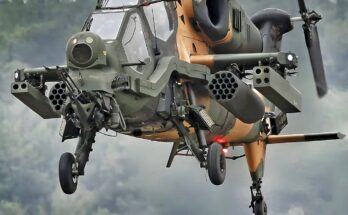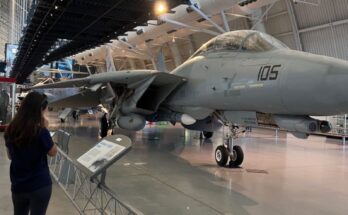
The F-15 Eagle is one of the most iconic and successful fighter aircraft ever built, widely recognized for its unmatched record in air-to-air combat. Developed in the early 1970s, the Eagle was designed by McDonnell Douglas, which later merged with Boeing. It was built to ensure air superiority for the United States Air Force and has since proven itself as a dominant force in modern aerial warfare.
The origins of the F-15 Eagle trace back to the lessons learned during the Vietnam War. U.S. military leaders realized the need for a new air superiority fighter that could counter advanced Soviet aircraft. McDonnell Douglas won the contract in 1969, and the first F-15A prototype flew in 1972. From its earliest flights, the Eagle demonstrated exceptional performance, combining speed, agility, and advanced avionics.
One of the F-15’s greatest strengths is its powerful Pratt & Whitney F100 engines, which allow it to reach speeds over Mach 2.5. Combined with a high thrust-to-weight ratio, the aircraft can climb rapidly and maneuver with precision at both high and low speeds. The Eagle’s large wings and lightweight design further enhance its agility, giving pilots an advantage in dogfights.
When it comes to armament, the F-15 is equipped with a lethal combination of weapons. Its standard loadout includes an internal M61 Vulcan 20mm cannon and up to eight air-to-air missiles, such as the AIM-7 Sparrow, AIM-120 AMRAAM, and AIM-9 Sidewinder. This versatile arsenal allows it to engage enemy aircraft at both long ranges and in close combat. The aircraft also incorporates advanced radar and avionics, enabling pilots to track, lock, and destroy multiple targets simultaneously.
The combat record of the F-15 speaks for itself. Since entering service in 1976, the Eagle has achieved more than 100 confirmed aerial victories without a single loss in air-to-air combat. This unmatched record was proven in conflicts such as the Gulf War, where F-15s downed dozens of enemy aircraft. Its dominance in the skies has made it a symbol of American air power and a trusted ally for nations that also operate the Eagle, including Israel, Saudi Arabia, and Japan.
Over the decades, several versions of the F-15 have been produced. The original single-seat F-15A was followed by the two-seat F-15B trainer. Improved variants like the F-15C and F-15D brought upgrades in avionics and weapon systems. Later came the F-15E Strike Eagle, a multirole variant capable of both air-to-air and air-to-ground missions. The Strike Eagle added advanced radar, targeting pods, and the ability to carry precision-guided munitions, making it one of the most versatile fighters in the world.
Even today, more than 50 years after its first flight, the F-15 remains in active service. Modernized versions, such as the F-15EX, are being introduced to replace older models. With upgraded avionics, new weapons capabilities, and extended service life, the Eagle continues to evolve for 21st-century warfare.
The Douglas F-15 Eagle is more than just a fighter jet; it is a testament to American engineering and military foresight. Its unmatched record and continued relevance prove why it remains one of the greatest combat aircraft in aviation history.


